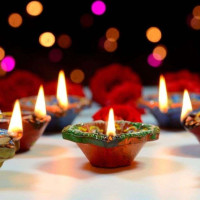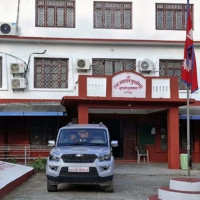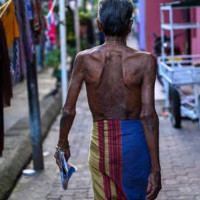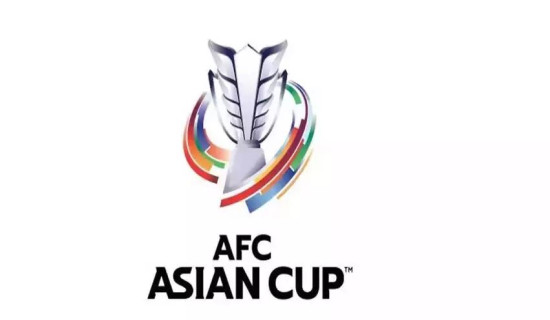- Sunday, 19 October 2025
Crowd management in sports: A growing concern in Nepal
Kathmandu, Dec. 8:“Due to an overwhelming number of attendees, we regret to inform you that entry to stadium for the match between Biratnagar Kings and Janakpur Bolts is no longer possible,” a notice from the Nepal Premier League on November 30 read.
However, the notice was not for fans seeking tickets for the opening match of the inaugural edition of the Nepal Premier League (NPL), it was to inform of the steps for a refund for the tickets as hundreds of fans were denied entry despite having tickets. Even those with seasonal tickets were denied entry.
While the game between Biratnagar and Janakpur was underway, police officers and hired security guards were busy engaging with the angry cricket fans who were not allowed entry from five different gates of TU International Cricket Ground, home of Nepali cricket, when there was no space to accommodate them.
When a crowd tried to enter the ground forcefully, around half a dozen fans were seriously injured in a stampede-like situation. Even policemen were injured and they had to be rushed to hospital
“Around 15-20 people were muscled by the gate, fighting for their lives. Some were pulled out, but others were critically injured. Blood was flowing from their mouths, and a few were unconscious,” a fan who was present at the scene shared via Nepal’s Rhino Army, a fan group of Nepali cricket supporters.
As per police officers deployed at TU Ground on that day, the sad incident occurred as fans, with tickets in their hand, were demanding entry and it would never have happened had tickets not been sold excessively.
Three days before the opening match, Khalti, the ticketing partner for NPL, on November 27, posted a photo on its social media stating that ‘all tickets’ for Biratnagar Kings vs Janakpur Bolts were ‘sold out’. But, as per the enraged fans of November 30, tickets were being sold physically also on the game day.
It was not the first time the TU Ground was packed to the fullest, and disputes arose between fans and security officials on its outer premises, but it was the first time in the NPL.
The scenario has not been limited to Kirtipur, Tripureshwor’s Dasharath Rangasala, home of Nepali football, had also faced consequences of poor security management with the worst incident occurring in March 1988, when 70 football fans were killed in a stampede.
Dasharath’s struggle continues
Dasharath Rangasala, Nepal’s biggest stadium with a capacity to hold 15,000 fans, gets packed whenever a good football match, be it national team’s or club-level, is underway.
Constructed in the 1950s, Dasharath Rangasala could accommodate as many as 27,000 spectators in the past. As per the records, Dasharath Rangasala, then 27,000-capacity, was packed with fans on March 12, 1988, for the finals of the Tribhuvan Challenge Shield between Nepal’s Janakpur Cigarette Factory and Bangladesh’s Mukti Joddha.
However, the joyous environment turned into pandemonium after a powerful storm caused panic in the stadium. At the time, concrete structures worked as parapets that lacked roofs, proper pathways, and emergency corridors and exits.
It was reported that winds began blowing at up to 80 km/hr coupled with hails. When the panicked crowd started fleeing, a stampede occurred at the southern gate where 70 fans lost their lives marking it as the ‘Black Day’ of Nepali sports.
While an incident like in 1988 has not been repeated in Dasharath Rangasala, there have been a worrying number of close encounters.
For instance, fans squeezed and forced through the northern gate of Dasharath Rangasala during the final of the 2nd Nepal Super League on December 30 last year in an unsafe fashion after a dispute broke between fans and security officials. The fans forced their way as many had tickets, but were denied entrance citing ‘Housefull’.
Crowd can be managed
An overly-packed TU Ground has had two matches every day except on December 1 due to local-level by-elections. And every match day, thousands of spectators arrive to watch the first game that begins at 9 am and the second at 1 pm.
Thus, learning from the problems faced on Saturday, November 30, and how fans turned out even on office days, the NPL officials and stakeholders seemed well prepared for next weekend, i.e. December 6 to witness two major encounters: Sudurpaschim Royals vs Lumbini Lions and Karnali Yaks vs Biratnagar Kings.
Led by the world’s No. 2 T20I all-rounder Dipendra Singh Airee, Sudurpashchim, with two in two wins, was facing Nepal’s skipper Rohit Kumar Paudel-led Lumbini Lions, which had two consecutive losses. Moreover, the second match between Karnali and Biratnagar was the chance for Nepal to witness a faceoff between two legends of the game: Shikhar Dhawan and Martin Guptill.
Posting a photo suggesting tickets for December 6 were sold out, Paras Khadka, Nepal’s legend of the game, in the night of December 5 requested the fans to catch the thrilling action from the comfort of their homes or any convenient location.
Khadka, secretary of CAN and coordinator for NPL, requested so as he was with the enraged fans last weekend and listened to their grievances. His post mostly suggested that fans without tickets should not flock to the stadium and create unnecessary hassle for those with tickets.
For good, the scene at TU Ground was not like before on the second Saturday. Authorities had added more barriers to ensure a regulated flow of fans into designated zones for the past couple of days which came in handy on December 6.
Social media was not buzzing with complaints against the NPL and its ticketing partner Khalti on December 6, it suggested that the management was far better than before. There were a whopping 14,000 spectators for the two games at TU Ground on Saturday.
“Great improvement in management while entering ground this time than the opening game. More security personnel and better crowd management,” Bijay Uprety (@BijayOCT25), a regular follower of Nepali and international cricket, posted on X at 9:37 am on December 6.
Not enough though
The international governing body of football, FIFA, and the Asian Football Confederation (AFC) strictly monitor the condition of stadiums before being allowed to host international matches.
As a result, in February this year, a team from the AFC deemed Dasharath Rangasala unsafe and unfit for international matches; it led the Nepal men’s team to play their home matches of the 2026 FIFA World Cup Asian Qualifiers second round on foreign soil.
However, the AFC reversed its decision and permitted the venue to host the AFC Challenge League playoff between Nepal's league champion Church Boys United and Bhutan's league champion Paro FC on August 13. Nevertheless, the suspension was not completely lifted.
Suresh Shah, spokesperson for the All Nepal Football Association (ANFA), said, "Different tournaments have different stadium standards. Dasharath Rangasala was approved for the AFC Challenge League match after inspection by League officials. However, future tournaments will require separate inspections."
The reasons for Dasharath Rangasala’s suspension include safety concerns of fans, inadequate emergency evacuation procedures and the floodlights’ condition among others. It shows that despite renovating the stadium multiple times, the results have not met the regularly updated standards of the AFC and FIFA.
“Safety and security are the most important considerations for the operation of a stadium. Warranting the safety and well-being of all spectators, players, officials and staff should always have overriding priority,” FIFA states under its stadium guidelines.
The Nepal Premier League is not even at the halfway stage until December 6 but the physical crowd engagement has been nothing like before in Nepal’s domestic tournament. Therefore, the excitement will build up by the time the playoffs begin on December 18 and the current preparation will not be enough then.
Modern infrastructure required
Cricket and football are not the only sports that suffer the issues of crowd management. Volleyball, Nepal’s national sport since May 2017, is also facing similar problems.
There are several domestic volleyball tournaments organised throughout the country annually. They all attract a huge crowd and most of them are organised in open spaces. Only the major tournaments get the chance to play at the Covered Hall on Dasharath Rangasala premises.
In 2024 alone, the Covered Hall, which is also used for basketball, wrestling and other sports events, has struggled with overcrowding during the weekend and final games of PM Cup, EWVL and CAVA events among others.
The National Table Tennis Training Centre in Lainchaur was also struggling when the centre for training hosted the South Asian qualifiers for Paris Olympics in May.
“We struggle during major games because Nepalis have unparalleled passion towards sports but the country lacks sufficient stadiums to accommodate a good number of fans,” Tanka Lal Ghising, member-secretary of the National Sports Council (NSC), told The Rising Nepal.
“There has been management of live telecasts for tournaments within Nepal so that fans who did not get a spot in the venue can still see the games from a convenient place. We request fans to stay calm until Nepal thrives with sports infrastructure,” added Ghising.
















